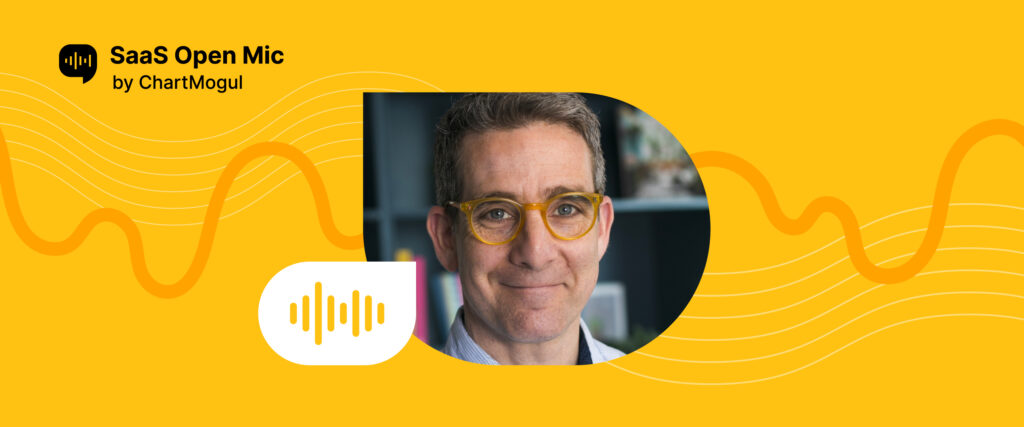Pricing & Jobs to be Done with Matt Lerner


In this episode of SaaS Open Mic, I speak with Matt Lerner, the founder and CEO of Startup Core Strengths. He shares his perspective on establishing and optimizing pricing using the Jobs to Be Done framework.
Matt spent 15 years as a marketer and General Manager in Silicon Valley, including ten years at PayPal. Later, as a VC at 500 Startups, he led dozens of early-stage investments. Now, Matt is running Startup Core Strengths, a live online program to help startups find their big growth levers, and pull them.
Tune in or read the summary below.
Two common pricing mistakes founders make
Matt has worked with dozens of startups and scaleups in his time at 500 Startups and Startup Core Strengths. A challenge that every company must face at some point is optimizing pricing or setting a price for a new product or feature. In Matt’s experience, founders make two common pricing mistakes when optimizing pricing: missing the mark on explaining the product’s value and overlooking non-financial costs.
Unclear value of the product
If you neglect to explain your product’s value thoroughly, it impacts conversion rates very quickly. Your growth will slow down.
If people aren’t buying the product, they [founders] lower the price. And the real reason they’re not buying the product isn’t the price, it’s probably that they don’t actually understand the value of the product. – Matt Lerner
Furthermore, lowering the price can be counterproductive as it can introduce more doubt and anxiety about the quality of your product.
Instead of lowering the price, what you want to do is find out the real barriers to purchase. And remove those first.
Once people understand the value, they become a lot less price sensitive.
Overlooking non-financial costs
Are you aware of all the blockers that prevent your prospects from purchasing your solution? Your prospects might be concerned about high switching costs, gettings approvals from stakeholders, or re-training staff.
Remove non-financial barriers before changing your pricing strategy.
Any decent salesperson can sell a Ferrari for a dollar. That’s not the magic. The magic is making a product that people are willing and happy to pay a premium for. So make sure that you understand the value and the barriers before you start mucking about with the price.
How to optimize SaaS pricing with Jobs to be Done
Jobs to Be Done (JTBD) interviews are widespread in product management.
We use jobs to be done interviews to understand their life before the product. What do they think they were looking for to solve this problem? What alternative solutions did they consider?
Matt noticed that the knowledge his portfolio companies gained from the JTBD interviews matched perfectly to inform the pricing strategy.
After all, people don’t just buy products. They “hire” them to do “jobs” (solve a problem). Your success depends on understanding the actual “jobs” customers use your product for. Make sure you understand the value you’re bringing to your customers to optimize your pricing.
A lot of times, people’s jobs to be done are not functional. They’re social and emotional. They’re trying to impress other people, they’re worried about what people will think of them, and that’s the value that their customers are paying.
To implement the JTBD framework into your pricing optimization, check out Matt’s Jobs to Be Done canvas which includes interview questions to unpack your prospects’ needs, and a template to organize your insights into “Jobs Cards”.
The magic is making a product that people are willing and happy to pay a premium for.
Four simple experiments to test price sensitivity
There are many well-known methods used for pricing optimization: anchoring, trials, freemium, etc.
Price anchoring is when you create an ‘anchor’ price to make the option you want prospects to choose look like a bargain. Free trials enable people to understand the full value of your product before you charge for it. Freemium get users loving one feature so much that they are willing to pay for other features. A/B testing allows you to test selling your product at different price points.
The Van Westendorp model
Another way to test price sensitivity is the Van Westendorp model. Once users understand the product value, ask them four questions:
The middle is never really a good pricing strategy. Either you’re trying to be the low-end, cheap and cheerful provider, or you’re trying to be a premium product. (..) If you’re trying to set pricing for a new feature or product from scratch, that’s a really good way to start.
90% of growth comes from 10% of the activities
When you’ve got a bunch of existing loyal customers, the quickest way to generate free cash flow is to raise prices. So, [at PayPal] we made a price increase. (..) But the big opportunities in payments were really in delivering value to customers. And other companies went with a long-term focus and they were able to capture that value.
Price increases are just one lever you can pull, which might be the wrong one. Looking back at PayPal’s growth and success, Matt was struck by how few actions have an impact on growth.
All of their growth really just came down to five things. (..) But the point is that PayPal obviously did a lot more than five things. They spent millions on different campaigns, building products that didn’t really have a big impact.
This applies to any business according to Matt.
For any successful business, when you look back in the beginning, 90% of their growth came from 10% of the stuff they tried. So find your 10% (pricing or not) as quick as you can and focus on it relentlessly. (..) Great startups don’t (cannot!) waste time on little stuff.
Focus on the right stuff
To grow, focus on the right things. Find your 10% and focus on it relentlessly. Discover what’s the big lever we can pull. And frame up your pricing in terms of customer value.
Focus on the big stuff, and the big stuff may or may not be pricing depending on where you are in your business. If it is pricing, then 1) Make sure people fully understand the value of your product in the context of what they’re trying to do in their lives. 2) Make sure that you’ve removed or addressed all the non-financial barriers.



